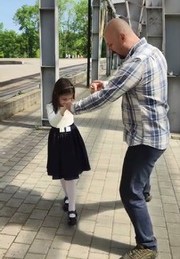
Fulltime online
Adapting to change
Richard Human reflects on the rewards and challenges of moving out of the classroom to become a full-time online teacher, trainer and coach.
2020 – 2023
 Two things happened to me in 2020: like millions of others, I fell sick with COVID-19 and, like hundreds of thousands of other people, I was pushed into the world of remote learning and teaching. And what a world it was! Even today, I am unsure which of the two was worse – being on the end of a bout of COVID or emailing endless Word document assignments to families under siege with the expectation that they would be printed off, dutifully compelted and returned to me to mark. Never again I thought! That was until the end of 2022.
Two things happened to me in 2020: like millions of others, I fell sick with COVID-19 and, like hundreds of thousands of other people, I was pushed into the world of remote learning and teaching. And what a world it was! Even today, I am unsure which of the two was worse – being on the end of a bout of COVID or emailing endless Word document assignments to families under siege with the expectation that they would be printed off, dutifully compelted and returned to me to mark. Never again I thought! That was until the end of 2022.
I caught COVID again and returned to online teaching. The second of which was by choice this time and this time I did not return to a physical classroom. And what a different world it is, the world of online teaching and learning, only a few years later.
I know, I know. Many tell me – “much of this stuff you are using was already there, it’s just new to you!” I accept this is true, but, like all new converts, I am now behaving as if I discovered it first! I apologise if I come across as a colonial in this new land I have ‘discovered’.
There is still much to discover and, at times, I become overwhelmed by what is out there in the gloom, beyond the light thrown by my small campfire.
Adapting to change
Remote teaching poses distinct and unexpected challenges for someone who qualified in the 1990s and has honed their craft over the last 30-years. I had hadly thought about my use of the ‘soft data’ I would gather in each lesson from a physical classroom. Reading student body language and their tone of voice, observing facial expressions, and gauging the classroom climate were all things I sought out without thinking. Gathering this information has become significantly more challenging in an online environment. Managing low-level distractions is harder online, as it’s difficult to tell if students are becoming distracted or losing focus. To ensure effective learning in this new landscape, I must develop new strategies and skills to maintain student engagement without traditional cues. It is also, of course, difficult for students too.
Working remotely has emphasised to me the importance of quickly learning names and being able to address students directly. Starting lessons with an open philosophical question such as ‘Can kindness change the world?” has given me small insights into the individuals I am working with. Asking for regular feedback is also a rich source of ‘soft data’.
Disrupted lives
This past year has been a whirlwind of change and adaptation. My work has ranged from teaching MYP Mathematics in Budapest, sharing Geography and Business lessons with Svitlo School students in Ukraine, and providing 1:1 tutoring with Suffolk’s Alternative Tuition Service. The resilience and determination my Ukrainian students display inspires me every day. By extending my practice beyond the confines of a traditional classroom, I believe I have made meaningful impacts in their lives, no matter their circumstances. These moments remind me why I chose to be a teacher.
Most meaningful have been my connections with ‘persistently absent’ students (of which there are 1.6 million in England) and those whose lives have been disrupted by violence.
Transitioning to online teaching initially felt like trying to perform my duties with one arm tied behind my back! Technical issues, lack of personal interactions and inaccessible non-verbal cues made me feel half the teacher I was in the analogue world. I’m learning to adapt and develop skills, and harness digital tools to create a dynamic virtual experience. My current favourites are the interactive lessons I create using LessonUp and Jamboard.
The rewards of teaching online
 Challenges are great but so are the rewards. Recently, with my Ukrainian students, we were learning about Argentina. I set homework that asked them to learn to tango, Argentine style. The dances were filmed and submitted to me via Telegram – mothers and fathers dancing with their children in parks and open spaces in quiet corners of the country. I have also asked people all over the world to make short, two-to-three-minute videos about their environment, which have found their way onto an online library for the students to access when they want.
Challenges are great but so are the rewards. Recently, with my Ukrainian students, we were learning about Argentina. I set homework that asked them to learn to tango, Argentine style. The dances were filmed and submitted to me via Telegram – mothers and fathers dancing with their children in parks and open spaces in quiet corners of the country. I have also asked people all over the world to make short, two-to-three-minute videos about their environment, which have found their way onto an online library for the students to access when they want.
Giving voice
I have noticed that the shift to online teaching provides a newfound voice to ‘quiet’ learners. Through chat features and forum posts, they can actively participate without in-person intimidation. Unexpectedly, students become digitally savvy, offering valuable suggestions to enhance the sessions and proposing innovative ideas for future lessons. This real-time feedback empowers me to tailor my teaching methods to better cater to their unique needs, creating a collaborative and dynamic learning environment where students shape their own educational experiences. I am constantly seeking feedback from my students concerning remote learning in general and my lessons specifically: “I want you in the classroom to help me when I am stuck” is a common refrain. Is this a ‘habit’ that students will need to wean themselves off? Will AI fill this space?
New opportunities
The shift to online teaching has also opened up new spaces for collaboration with other educators around the world. I now have access to like-minded educators, exchanging ideas and resources to develop creative ways of teaching in this virtual environment. Far from being isolated in my own bubble, I feel connected and empowered by the global collective of teachers across the world.
Working with learners in Ukraine amidst the war poses unique challenges, so we use asynchronous learning methods when internet access is not always guaranteed. Online teaching has thus proven its adaptability and potential even in the face of adversity. In Tanzania, I’m exploring ways I can collaborate with Tumaini School, set up for young girls whose formal education ended when they fell pregnant.
The future
 Online teaching is a powerful tool, allowing us to reach students no matter where we are in the world. But it must never replace traditional brick-and-mortar schools; they are places invaluable for personal development and for building communities and societies.
Online teaching is a powerful tool, allowing us to reach students no matter where we are in the world. But it must never replace traditional brick-and-mortar schools; they are places invaluable for personal development and for building communities and societies.
Schools teach us how to interact with and understand others, honing skills that are crucial for our growth. They provide an arena where relationships are built and emotions explored. We mustn’t forget the importance of this face-to-face learning experience.
Today, I’m determined to stand, with my back to the fire, facing outwards into the dark in an effort to identify the digital shapes and contours that lay out there.
 Initially trained as a primary teacher, Richard Human has also worked extensively with secondary pupils and adult learners. He is a trained Forest School Leader and an Associate Member of the European Mentoring and Coaching Council, the EMCC
Initially trained as a primary teacher, Richard Human has also worked extensively with secondary pupils and adult learners. He is a trained Forest School Leader and an Associate Member of the European Mentoring and Coaching Council, the EMCC
E: richardhuman@mac.com
FEATURE IMAGE: by Gerd Altmann from Pixabay
Support images: by Emilian Robert Vicol from Pixabay & Gerd Altmann from Pixabay & thank you to Richard for the great image of a tango dancing father and daughter.



